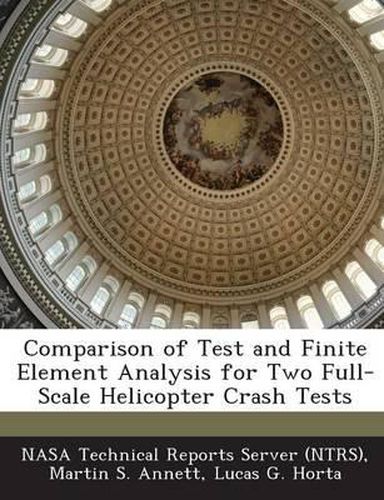Readings Newsletter
Become a Readings Member to make your shopping experience even easier.
Sign in or sign up for free!
You’re not far away from qualifying for FREE standard shipping within Australia
You’ve qualified for FREE standard shipping within Australia
The cart is loading…






Finite element analyses have been performed for two full-scale crash tests of an MD-500 helicopter. The first crash test was conducted to evaluate the performance of a composite deployable energy absorber under combined flight loads. In the second crash test, the energy absorber was removed to establish the baseline loads. The use of an energy absorbing device reduced the impact acceleration levels by a factor of three. Accelerations and kinematic data collected from the crash tests were compared to analytical results. Details of the full-scale crash tests and development of the system-integrated finite element model are briefly described along with direct comparisons of acceleration magnitudes and durations for the first full-scale crash test. Because load levels were significantly different between tests, models developed for the purposes of predicting the overall system response with external energy absorbers were not adequate under more severe conditions seen in the second crash test. Relative error comparisons were inadequate to guide model calibration. A newly developed model calibration approach that includes uncertainty estimation, parameter sensitivity, impact shape orthogonality, and numerical optimization was used for the second full-scale crash test. The calibrated parameter set reduced 2-norm prediction error by 51% but did not improve impact shape orthogonality.
$9.00 standard shipping within Australia
FREE standard shipping within Australia for orders over $100.00
Express & International shipping calculated at checkout
Finite element analyses have been performed for two full-scale crash tests of an MD-500 helicopter. The first crash test was conducted to evaluate the performance of a composite deployable energy absorber under combined flight loads. In the second crash test, the energy absorber was removed to establish the baseline loads. The use of an energy absorbing device reduced the impact acceleration levels by a factor of three. Accelerations and kinematic data collected from the crash tests were compared to analytical results. Details of the full-scale crash tests and development of the system-integrated finite element model are briefly described along with direct comparisons of acceleration magnitudes and durations for the first full-scale crash test. Because load levels were significantly different between tests, models developed for the purposes of predicting the overall system response with external energy absorbers were not adequate under more severe conditions seen in the second crash test. Relative error comparisons were inadequate to guide model calibration. A newly developed model calibration approach that includes uncertainty estimation, parameter sensitivity, impact shape orthogonality, and numerical optimization was used for the second full-scale crash test. The calibrated parameter set reduced 2-norm prediction error by 51% but did not improve impact shape orthogonality.